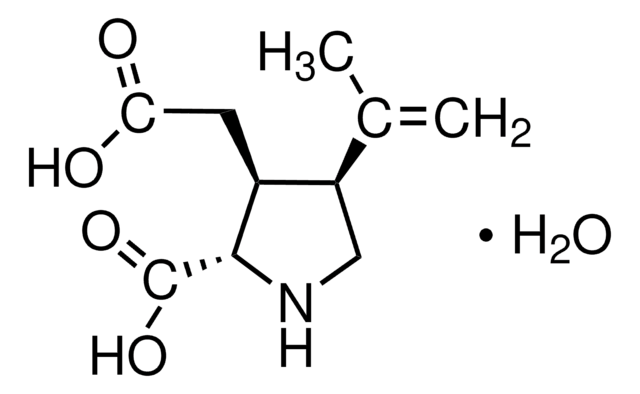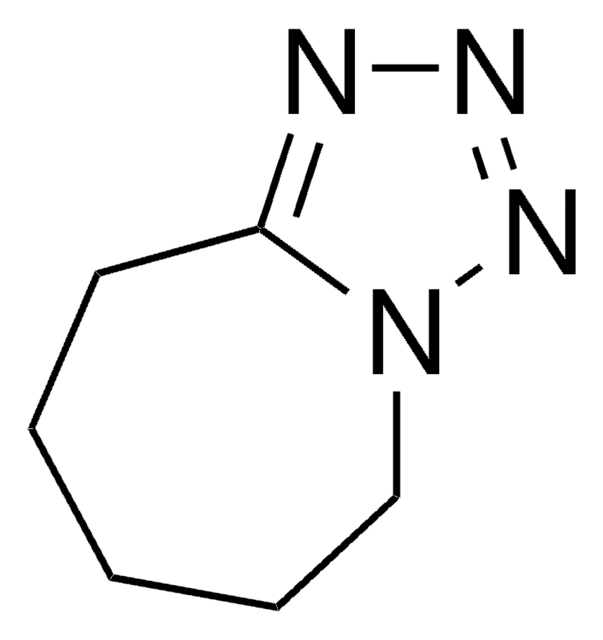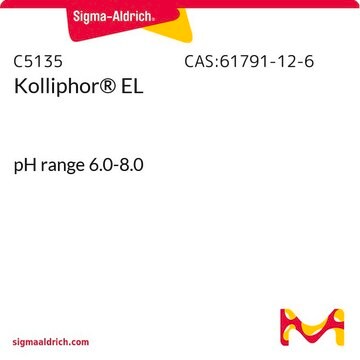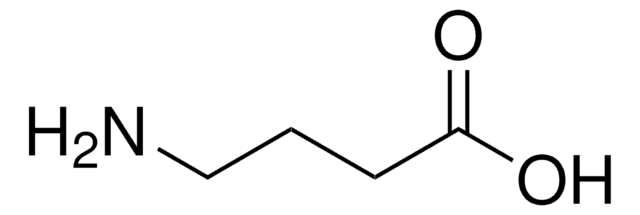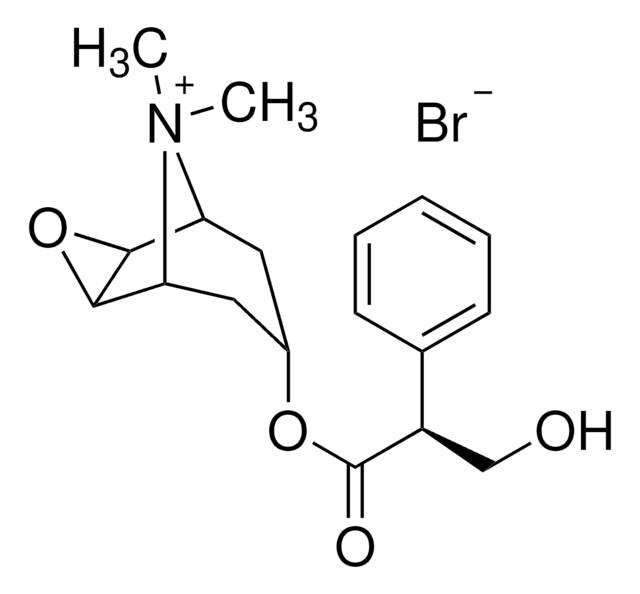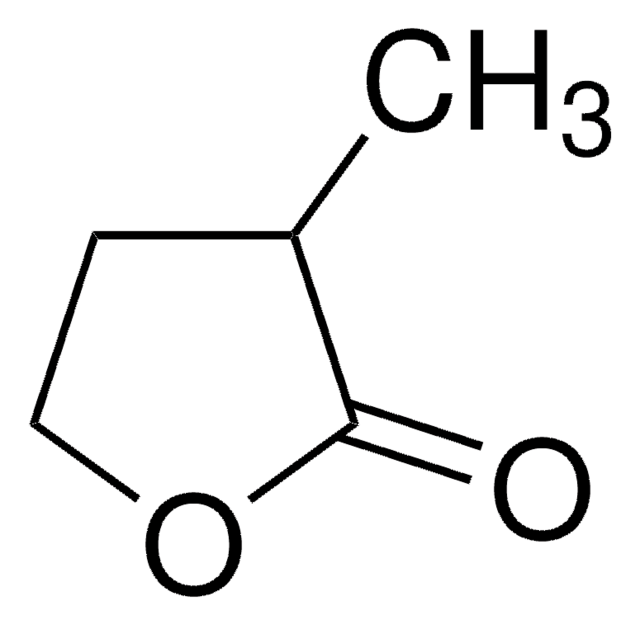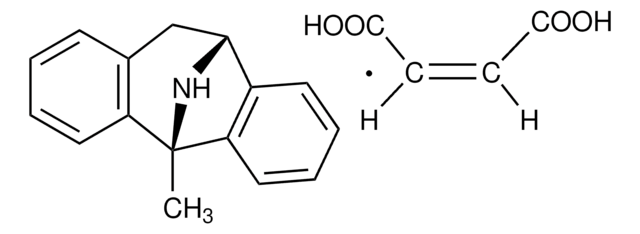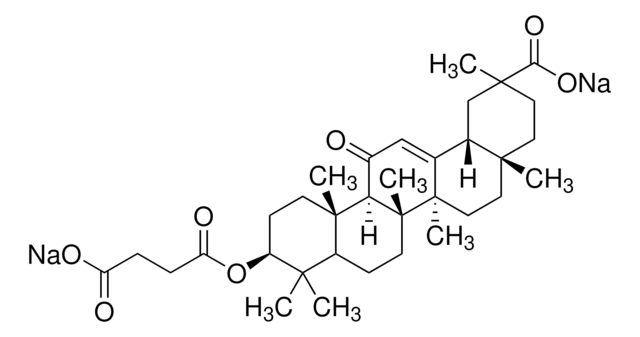K0250
Kainic acid monohydrate
≥99% (TLC), powder, ionotropic glutamate receptor (kainate class) agonist
동의어(들):
Digenin, Kainate, 2-Carboxy-3-carboxymethyl-4-isopropenylpyrrolidine
About This Item
추천 제품
제품명
Kainic acid monohydrate, ≥99% (TLC)
분석
≥99% (TLC)
양식
powder
불순물
Glutamate, free
solubility
H2O: soluble
저장 온도
2-8°C
SMILES string
O.CC(=C)[C@H]1CN[C@@H]([C@H]1CC(O)=O)C(O)=O
InChI
1S/C10H15NO4.H2O/c1-5(2)7-4-11-9(10(14)15)6(7)3-8(12)13;/h6-7,9,11H,1,3-4H2,2H3,(H,12,13)(H,14,15);1H2/t6-,7+,9-;/m0./s1
InChI key
FZNZRJRSYLQHLT-SLGZUKMRSA-N
유전자 정보
human ... GRIA1(2890) , GRIA2(2891) , GRIA4(2893) , GRIK1(2897) , GRIK2(2898) , GRIK3(2899) , GRIK4(2900) , GRIK5(2901) , SLC1A1(6505) , SLC1A2(6506) , SLC1A3(6507)
mouse ... Gria1(14799)
rat ... Gria1(50592) , Grik1(29559) , Grik4(24406) , Grin2a(24409)
유사한 제품을 찾으십니까? 방문 제품 비교 안내
일반 설명
애플리케이션
- tostudy mechanisms of excitation-induced apoptosis and epilepsy.
- to hamper themitochondrial function ()
- used to induce c-fosexpression in the mice′s brains, specifically targeting the dorsal hippocampus.()
생화학적/생리학적 작용
특징 및 장점
제조 메모
Storage Class Code
11 - Combustible Solids
WGK
WGK 3
Flash Point (°F)
Not applicable
Flash Point (°C)
Not applicable
개인 보호 장비
Eyeshields, Gloves, type N95 (US)
이미 열람한 고객
관련 콘텐츠
DISCOVER Bioactive Small Molecules for Neuroscience
자사의 과학자팀은 생명 과학, 재료 과학, 화학 합성, 크로마토그래피, 분석 및 기타 많은 영역을 포함한 모든 과학 분야에 경험이 있습니다..
고객지원팀으로 연락바랍니다.